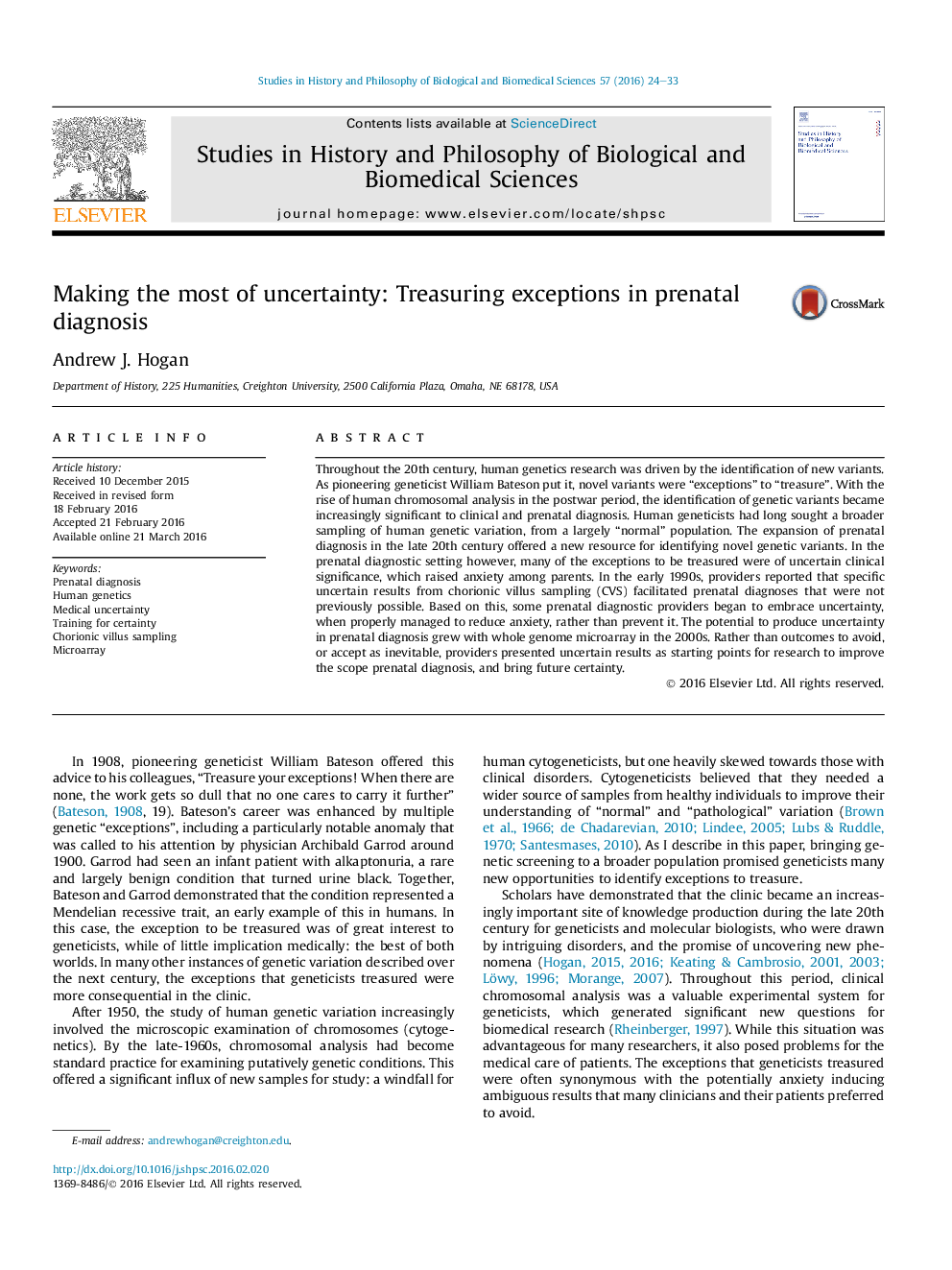| Article ID | Journal | Published Year | Pages | File Type |
|---|---|---|---|---|
| 7552220 | Studies in History and Philosophy of Science Part C: Studies in History and Philosophy of Biological and Biomedical Sciences | 2016 | 10 Pages |
Abstract
Throughout the 20th century, human genetics research was driven by the identification of new variants. As pioneering geneticist William Bateson put it, novel variants were “exceptions” to “treasure”. With the rise of human chromosomal analysis in the postwar period, the identification of genetic variants became increasingly significant to clinical and prenatal diagnosis. Human geneticists had long sought a broader sampling of human genetic variation, from a largely “normal” population. The expansion of prenatal diagnosis in the late 20th century offered a new resource for identifying novel genetic variants. In the prenatal diagnostic setting however, many of the exceptions to be treasured were of uncertain clinical significance, which raised anxiety among parents. In the early 1990s, providers reported that specific uncertain results from chorionic villus sampling (CVS) facilitated prenatal diagnoses that were not previously possible. Based on this, some prenatal diagnostic providers began to embrace uncertainty, when properly managed to reduce anxiety, rather than prevent it. The potential to produce uncertainty in prenatal diagnosis grew with whole genome microarray in the 2000s. Rather than outcomes to avoid, or accept as inevitable, providers presented uncertain results as starting points for research to improve the scope prenatal diagnosis, and bring future certainty.
Related Topics
Life Sciences
Agricultural and Biological Sciences
Agricultural and Biological Sciences (General)
Authors
Andrew J. Hogan,
